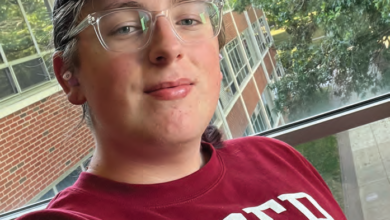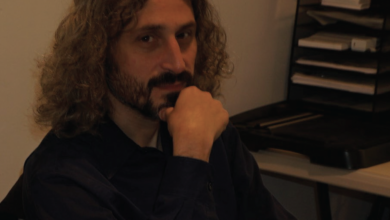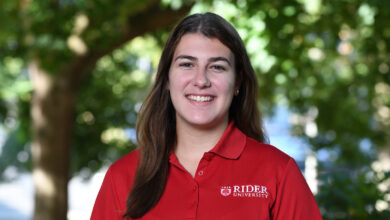Microaggression and Tokenism within PWIs
By Tatyanna Carman
College: a place of learning and growth to prepare a person for the “real-world” and the job market. It also is a time where people interact with others that come from different backgrounds, which is a learning experience in and of itself. However, that can come with some unintentional consequences. A microaggression is defined by the Merriam Webster’s Dictionary as “a comment or action that subtly and often unconsciously or unintentionally expresses a prejudiced attitude toward a member of a marginalized group, such as a racial minority.” This dictionary also defined a token, in this context, as a member of a group (such as a minority) that is included within a larger group through tokenism. Microaggressions and being a “token,” is present within predominantly white institutions, commonly known as PWIs, and also in the workplace. So, let’s talk about it.
Many people of color have been in a situation where they felt as though they had to represent their race or ethnicity when in a group of people that don’t look like them. They have heard strange backhanded compliments like, “you’re pretty for a…” insert ethnicity here. Psychology Today conducted a study on white American college students and their likelihood to say things that carry microaggressive messages.
The study involved 33 African-American and 118 non-hispanic white undergraduate students aged between 18 and 35 years old at the University of Louisville. When it described the results, it said, “Specifically, White students who reported that they were more likely to commit microaggressions were more likely to endorse colorblind, symbolic, and modern racist attitudes. They also held significantly less favorable feelings and attitudes towards Black people. This was especially true for White students who thought that minorities are too sensitive about matters related to racial prejudice.”
Although this study took place in the University of Louisville, Rider junior communication studies major Regina Askew-Jones said she has experienced microaggressions at Rider, but said they were “subtle.”
She shared how she reacts to those types of comments.
“Honestly, it is not really a response. My reaction is just like a clutch of the pearls. Like ‘Wow, OK.’”
Askew-Jones also shared times of how she felt like a token and felt as though she was “representing her whole race.”
“That is the most annoying thing ever because the thing is that people think is that one person can represent a whole entire race of people or a demographic in general, which is so untrue,” she said. “Black people come in different forms, shapes, sizes. We all have different ideas. We are different people. We’re not the same person, so my perspective might be different from yours just solely because we are different people, not because we’re black.”
Senior graphic design major Ameerah Flowers said she has become desensitized to being a token because it is so common to her, especially as one of the few black students in her classes at Rider. As a result, she described her experience has been neutral, due to Rider’s diversity, with the exception of Turning Point USA’s “White Privilege is a Myth” event.
Junior psychology major and member of the Center for Diversity and Inclusion (CDI) Alyssa Darden said she felt represented on campus because of her involvement in the department. She said she believed the Inclusive Excellence Plan, the relocation of the office for CDI to allow for more room and resources, mentoring and peer leader opportunities for people of color among other aspects helped increase diversity on campus.
Since college is a stepping stone to the real world, these issues are present in the workplace as well. There was a viral video that spread on Twitter about a group of white office workers touching a black woman’s hair at work, where she looked sightly uncomfortable. It created a conversation about whether or not her coworkers were wrong in doing that and why the black woman didn’t say anything to stop them.
“I have experienced microaggressions in previous jobs where I was described as looking ‘exotic’ by customers,” Darden said. “A customer also asked to touch my hair and asked where I’m from. In all of those instances, it made me feel like I was significantly different from others and that they were insinuating that I wasn’t American. Regardless, I kept a smile on and didn’t say anything because I was expecting a tip from them.”
Askew-Jones also touched on microaggressions and tokenism within the workplace and said that it comes with positives and negatives, where you can answer some questions pertaining to the black experience, but not all. She also gave advice on how to handle those types of situations.
“Be direct. Let them know in advance, ‘This is not what I’m here for. If you want to hire me because ’m black, don’t hire me. Hire me because I’m an asset, for what you’re hiring me for.’ Even though that you feel this way amongst people that you may go to school with or anything, you need to be direct and straightforward.”
Employers need to broaden their knowledge so they can get closer to enforcing real change. This includes having honest conversations at work to encourage all employees to think about and reflect on their own privilege and the ways in which they can commit to speaking up.
“Once individual team members commit to digging deep on their own role in systemic prejudice, bringing co-workers together across race for meaningful dialogues can further develop empathy and report from the Center for Talent Innovation.
In order for an issue like microaggressive comments and tokenism to get better is to one, directly voice uncomfort when the comment is stated and two, continue to have a conversation about implicit prejudices. I know it is hard to be direct without sounding rude, however, your feelings are valid and should be treated as such especially by employers, coworkers and peers. Also as mentioned earlier, true and authentic diversity would help allow different voices and perspectives to speak on their experiences, which would further educate those who might not know about such subtle issues as these.
“We have to understand that we can’t always solely blame the individual for their actions because most of the ignorance comes from misinformation, biases, and observed behavior from family members or the environment they were raised in,” Darden said. “It’s our job to inform them and make them realize that what they’re doing negatively affects us.”



